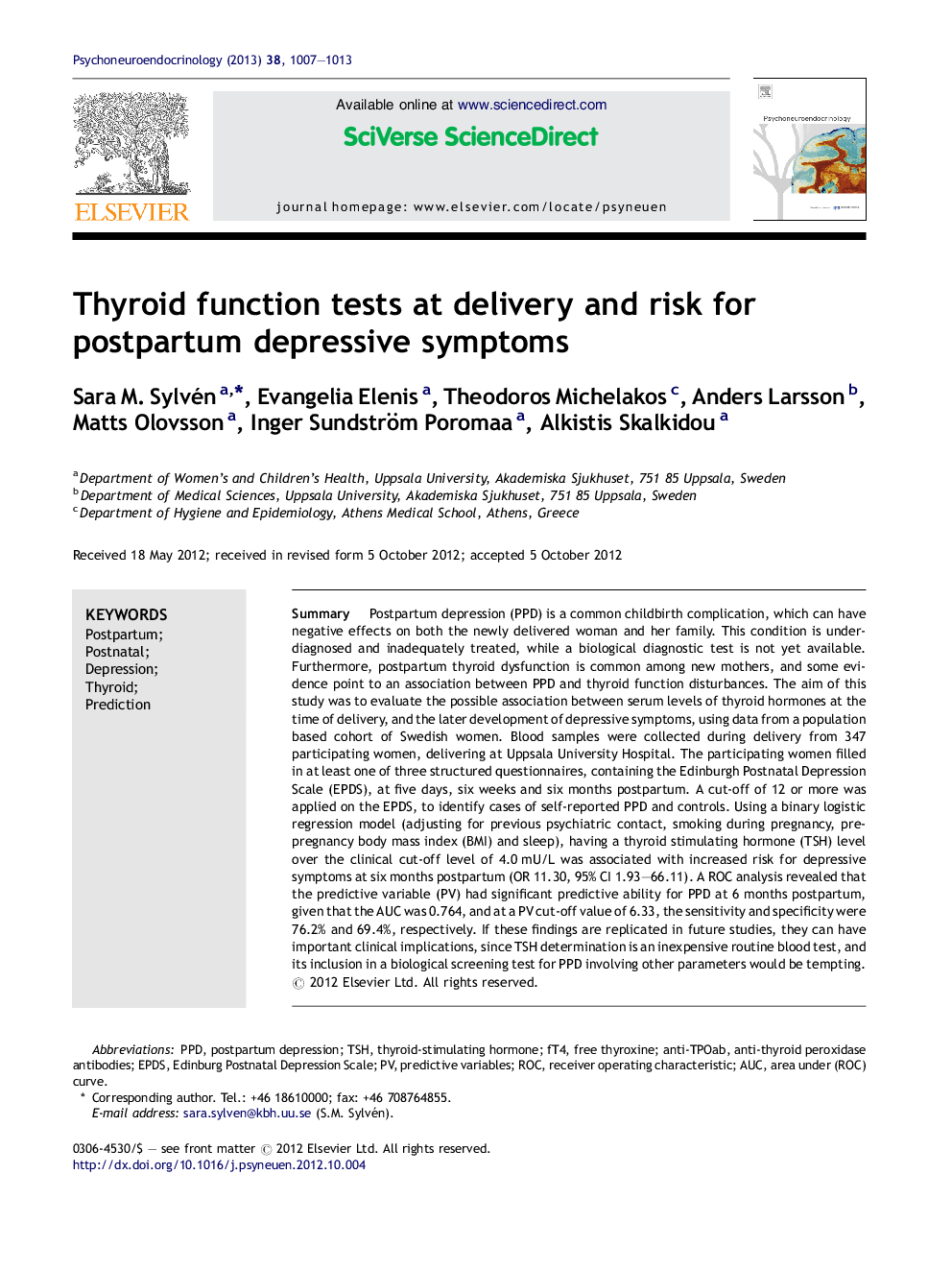| Article ID | Journal | Published Year | Pages | File Type |
|---|---|---|---|---|
| 336465 | Psychoneuroendocrinology | 2013 | 7 Pages |
SummaryPostpartum depression (PPD) is a common childbirth complication, which can have negative effects on both the newly delivered woman and her family. This condition is underdiagnosed and inadequately treated, while a biological diagnostic test is not yet available. Furthermore, postpartum thyroid dysfunction is common among new mothers, and some evidence point to an association between PPD and thyroid function disturbances. The aim of this study was to evaluate the possible association between serum levels of thyroid hormones at the time of delivery, and the later development of depressive symptoms, using data from a population based cohort of Swedish women. Blood samples were collected during delivery from 347 participating women, delivering at Uppsala University Hospital. The participating women filled in at least one of three structured questionnaires, containing the Edinburgh Postnatal Depression Scale (EPDS), at five days, six weeks and six months postpartum. A cut-off of 12 or more was applied on the EPDS, to identify cases of self-reported PPD and controls. Using a binary logistic regression model (adjusting for previous psychiatric contact, smoking during pregnancy, pre-pregnancy body mass index (BMI) and sleep), having a thyroid stimulating hormone (TSH) level over the clinical cut-off level of 4.0 mU/L was associated with increased risk for depressive symptoms at six months postpartum (OR 11.30, 95% CI 1.93–66.11). A ROC analysis revealed that the predictive variable (PV) had significant predictive ability for PPD at 6 months postpartum, given that the AUC was 0.764, and at a PV cut-off value of 6.33, the sensitivity and specificity were 76.2% and 69.4%, respectively. If these findings are replicated in future studies, they can have important clinical implications, since TSH determination is an inexpensive routine blood test, and its inclusion in a biological screening test for PPD involving other parameters would be tempting.
